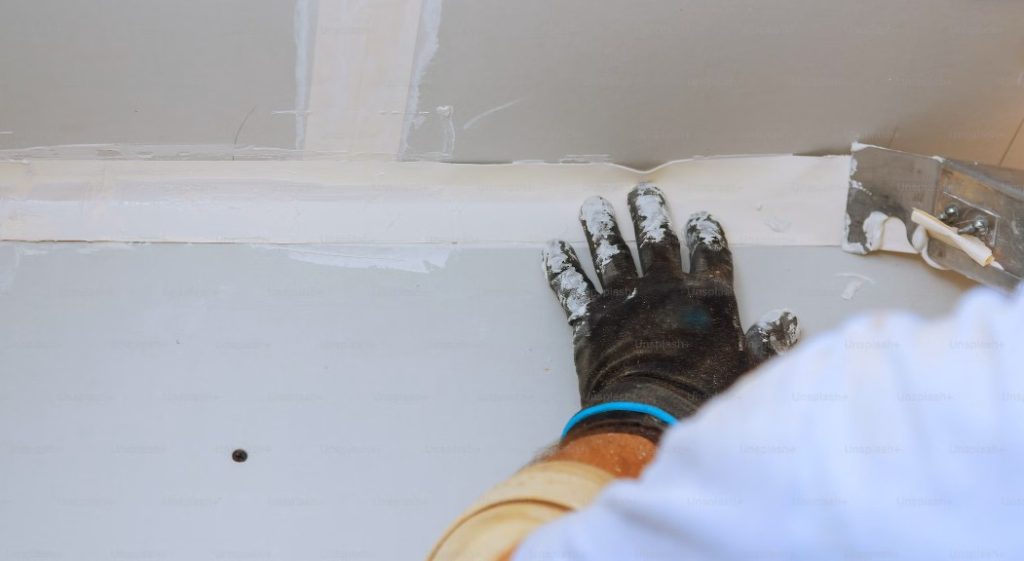
Stucco Patching: A Comprehensive Guide for Repairing and Restoring Walls
Welcome to our comprehensive guide on stucco patching. In this article, we will provide expert advice and tips to help you achieve flawless repairs for your stucco. Whether you are a DIY enthusiast or looking to hire a professional, this guide will equip you with the knowledge and techniques needed to restore the beauty of your home.
Understanding Stucco Patching
What is stucco patching?
Stucco patching refers to the process of repairing damaged or deteriorated stucco surfaces. It involves removing the damaged area and applying a new layer of stucco to restore the integrity and appearance of the surface.
Common reasons for stucco damage
Stucco can be damaged due to various factors such as moisture infiltration, impact, settling of the building, or improper installation. Understanding the cause of the damage is crucial in determining the appropriate repair method.
Benefits of timely stucco patching
Timely stucco patching not only enhances the aesthetic appeal of your home but also prevents further damage. By addressing small cracks or holes promptly, you can avoid more extensive repairs in the future and maintain the structural integrity of your stucco surfaces.
Preparing for Stucco Patching
1. Assess the extent of Damage
Before starting the patching process, carefully examine the damaged area to determine the size and severity of the damage. This will help you plan the necessary repairs and gather the appropriate tools and materials. Carefully examine each affected area to identify its cause and severity – common issues include hairline cracks, larger ones, holes, or areas where stucco has detached entirely from walls. Understanding its nature will enable you to select an effective repair strategy.
2. Gathering necessary Tools and Materials
To effectively patch stucco, you will require various tools and materials such as:
Protective Gear: Safety goggles, gloves, and a dust mask will provide ample protection from debris and dust particles.
Hammer and Chisel: Use these tools to remove loose or damaged stucco from walls.
c. Wire Brush: Used to clean around damaged sections and collect loose particles.
d. Stucco Mix: Purchase high-quality stucco mix from a reputable provider, making sure it matches both the color and texture of the existing stucco.
e. Trowel: To apply and smooth stucco mix efficiently and uniformly. A trowel is indispensable.
Bonding Agent: Use a bonding agent to enhance adhesion between the existing stucco and the new patch.
g. Paint and Primer: When necessary, purchase paint and primer that matches the existing stucco color.
Safety precautions for stucco patching
Stucco patching involves working with potentially harmful materials and tools. It is important to wear protective gear, such as gloves and goggles, to prevent injuries. Additionally, ensure proper ventilation in the work area to avoid inhaling dust or fumes.
3. Prep Work
Before applying a patch, it’s essential to prepare the surface properly by following these steps:
a. Cleaning the damaged Area: Use a wire brush, use it to sweep away loose debris, dirt, or stucco near the damaged section. Make sure the surface remains free from particles by wiping it down.
b. Create a Rough Surface: With a hammer and chisel, create an uneven surface around damaged areas to help the new stucco adhere more tightly. This process should help facilitate faster recovery time.
c. Apply a Bonding Agent: Once the surface has been prepared, apply a bonding agent to enhance the bond between the existing stucco and the new patch. This will improve the adhesion between them both.
4. Installation of Stucco Patch
Now that the surface has been properly prepared, it’s time to apply the stucco patch. Follow these steps:
a. Combine Stucco: Follow the manufacturer’s instructions when mixing stucco mix with water to achieve your desired consistency, similar to pancake batter.
b. Dampen the Surface: Before beginning stucco application, dampening the prepared surface with water can prevent patches from drying too quickly and improve adhesion.
c. Apply the Stucco: With a trowel, apply the stucco mix onto the damaged area, beginning from its center and working outwards towards its edges until your patch stands slightly higher than its surroundings.
Feather the Edges: Use a trowel to feather the edges of the patch so it blends in seamlessly with its surroundings and helps form a seamless transition. This will allow it to blend more smoothly.
e. Allow the Patch to Cure: For best results, follow the manufacturer’s instructions regarding your stucco mix to determine its curing time. During this period, protect it from excessive sunlight, wind, or rain to ensure optimal results.
5. Finishing Touches mes Once your patch has set, you can complete your stucco patching experience with some finishing touches:
Sanding: To achieve a more uniform surface finish, if necessary sand the patch surface using fine-grit sandpaper while being mindful not to damage any adjacent stucco walls.
b. Prime and Paint: If the patch is visible, prime and paint it to match the existing stucco’s color and texture for seamless integration. Consult a professional or paint specialist for this step to ensure optimal results.
Tips and Tricks for Flawless Stucco Repairs
Choosing the right stucco patching products
When selecting stucco patching products, consider factors such as the type of stucco, color matching, and durability. Consult with a professional or refer to product recommendations to ensure you choose the best products for your specific needs.
Techniques for blending the patch with existing stucco
Blending the patch with the existing stucco is essential for achieving a seamless repair. Techniques such as texturing, sponge finishing, or using a float can help you achieve a consistent and natural-looking result.
Avoiding common mistakes in stucco patching
Stucco patching can be challenging, and mistakes can lead to unsightly repairs. Avoid common mistakes such as applying too much pressure, using incorrect ratios of water and stucco mix, or neglecting proper curing time.
Frequently Asked Questions
How long does stucco patching take to dry?
The drying time for stucco patching can vary depending on factors such as temperature and humidity. It is recommended to allow at least 24-48 hours for the patch to fully dry before applying any finishing touches.
Can I paint over the patched stucco?
Yes, once the stucco patch is fully cured, you can paint over it to match the surrounding stucco. Choose a high-quality exterior paint that is compatible with stucco surfaces for the best results.
What if the stucco patch doesn’t match the existing texture?
If the stucco patch doesn’t perfectly match the existing texture, you can try using various techniques such as texturing, sponge finishing, or using a float to create a similar texture. Practice on a small area before applying it to the entire patch.
Is stucco patching a DIY project or should I hire a professional?
Stucco patching can be a DIY project for those with experience and the necessary tools. However, for more extensive damage or if you are unsure of your skills, it is recommended to hire a professional stucco contractor to ensure a high-quality repair.
How often should stucco patching be done?
The frequency of stucco patching depends on various factors such as the age of the stucco, weather conditions, and maintenance. Regular inspections and addressing small damages promptly can help prevent the need for extensive patching in the future.
Can stucco patching prevent further damage?
Yes, timely stucco patching can prevent further damage by sealing cracks or holes that could allow moisture or pests to penetrate the stucco. Regular maintenance and inspections are key to identifying and addressing potential issues early on.
Are there any alternatives to traditional stucco patching?
Yes, there are alternative methods such as using stucco repair kits or hiring professionals who specialize in innovative stucco repair techniques. These alternatives may offer faster or more durable repairs, depending on the specific situation.
Conclusion
In conclusion, stucco patching is a crucial aspect of maintaining the beauty and integrity of your home. By following the expert advice and tips provided in this comprehensive guide, you can achieve flawless repairs and restore the charm of your stucco surfaces. Don’t hesitate to take action and start your stucco patching project today. If you need professional assistance, contact our team for reliable and high-quality stucco repair services.
